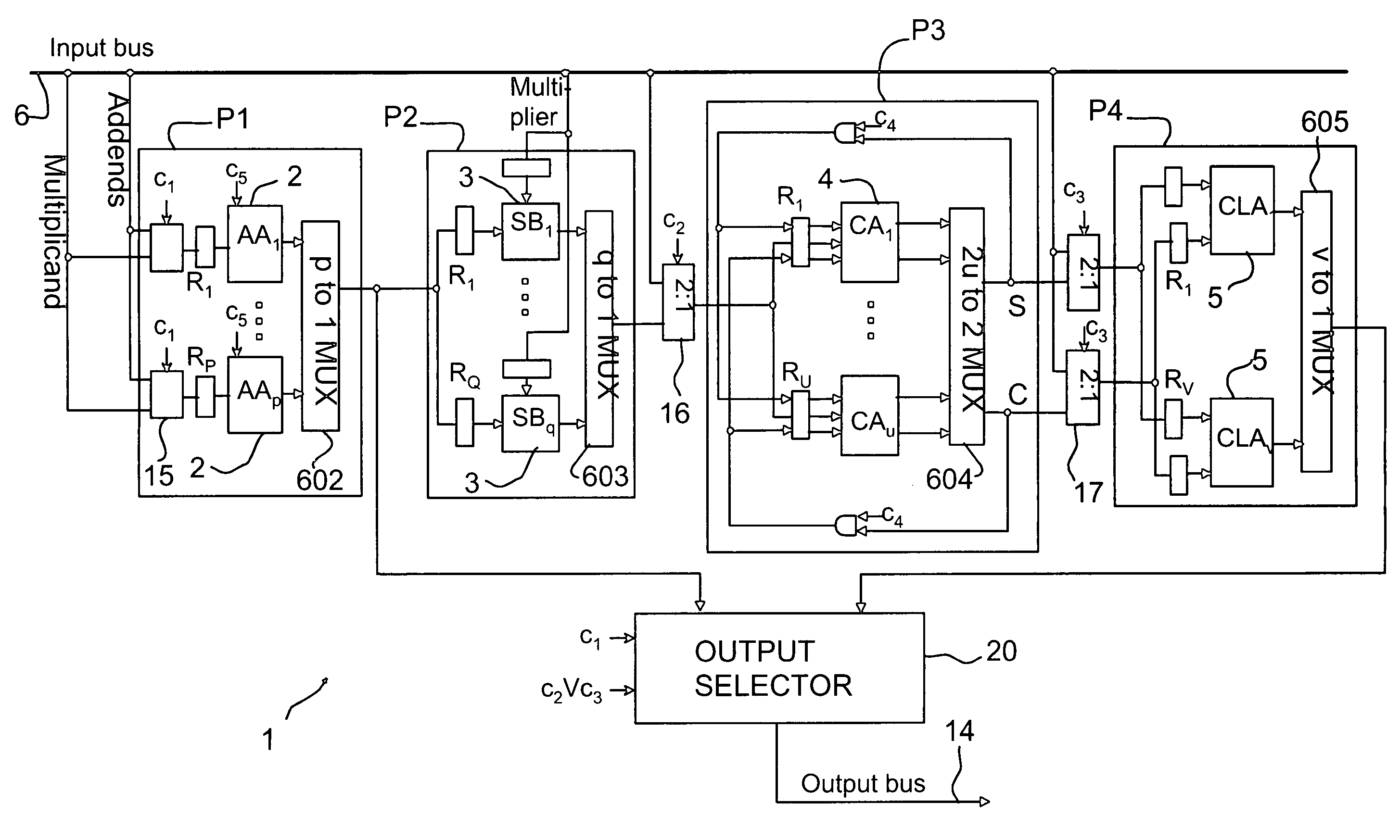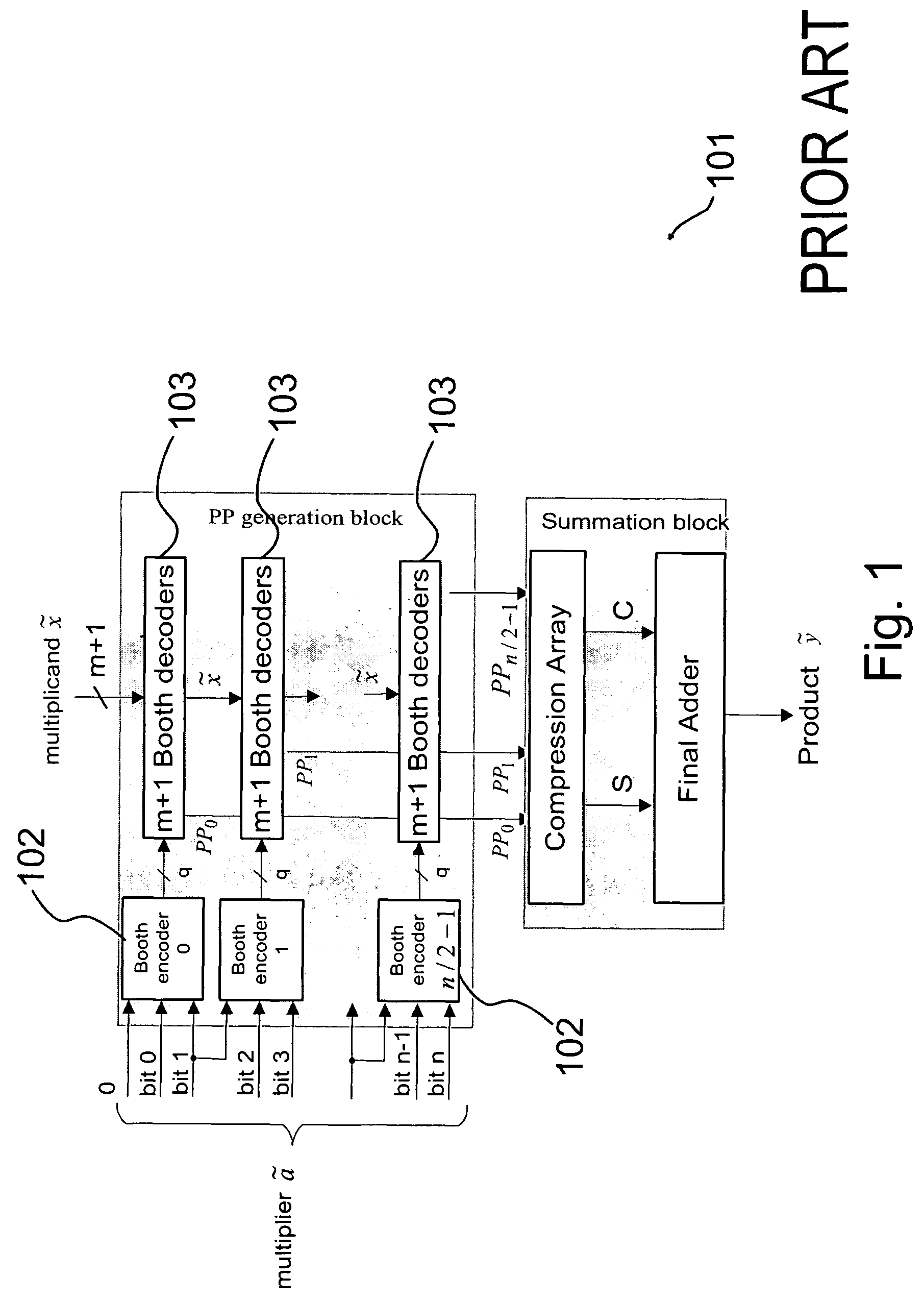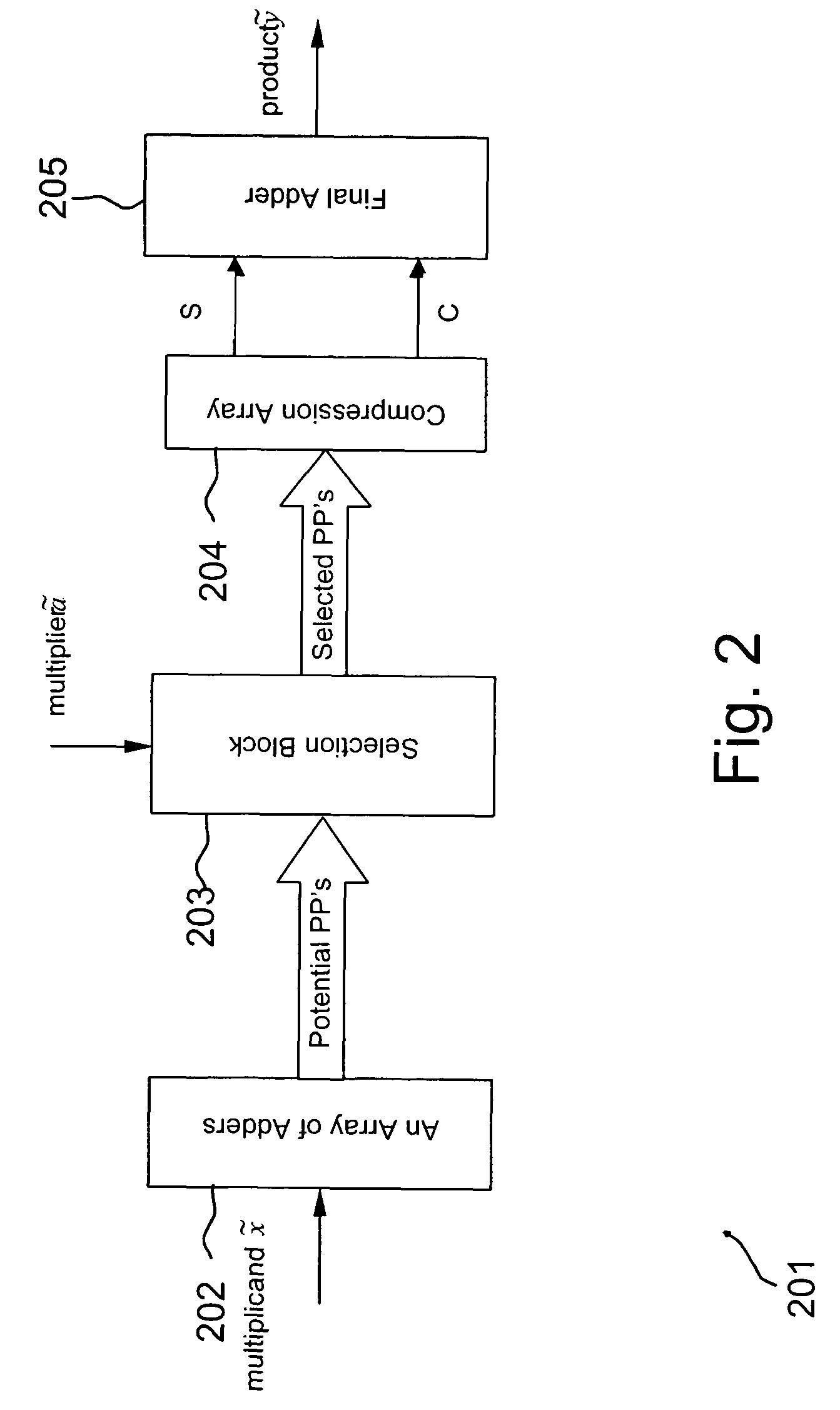Method and system for performing calculation operations and a device
a calculation operation and calculation system technology, applied in the field of methods and systems for performing calculation operations and devices, can solve the problems of developing systems that do not always meet the requirements of high-speed and power consumption, the multiplication operation is resource-intensive, and the development system is expensive, so as to achieve the effect of reducing power consumption, faster performance and less power
- Summary
- Abstract
- Description
- Claims
- Application Information
AI Technical Summary
Benefits of technology
Problems solved by technology
Method used
Image
Examples
Embodiment Construction
[0076]In the following, the first advantageous embodiment of the present invention will be described in more detail. The general structure of the first embodiment of the device according to the present invention is illustrated on FIG. 6. The device 1 is divided into a set of different pipeline stages P1 to P4. In this embodiment the device 1 comprises four pipeline stages but it is obvious that within the scope of the present invention the number of pipeline stages can be different than four.
[0077]The device according to the first advantageous embodiment of the present invention incorporates a plurality (bank) of multipliers / MAC units. The general structure of the variety of banks of radix-T Booth recoded (T=8, 16) or non-recoded (T=4, 8) multipliers is schematically shown on FIG. 6. The advantageous embodiment of the structure for a bank of multipliers / MAC units may in general be described as a pipelined device wherein the first pipeline stage P1 consists of a plurality of, e.g. p,...
PUM
 Login to View More
Login to View More Abstract
Description
Claims
Application Information
 Login to View More
Login to View More - R&D
- Intellectual Property
- Life Sciences
- Materials
- Tech Scout
- Unparalleled Data Quality
- Higher Quality Content
- 60% Fewer Hallucinations
Browse by: Latest US Patents, China's latest patents, Technical Efficacy Thesaurus, Application Domain, Technology Topic, Popular Technical Reports.
© 2025 PatSnap. All rights reserved.Legal|Privacy policy|Modern Slavery Act Transparency Statement|Sitemap|About US| Contact US: help@patsnap.com



